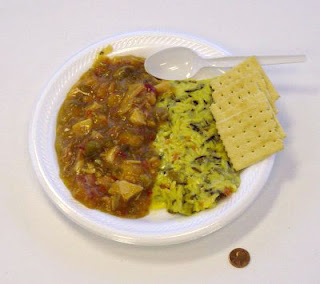 Every year on November 11th Canadians, and the citizens of the Commonwealth countries, pause in a silent moment of remembrance for the men and women who have served, and continue to serve our country during times of war, conflict and peace. More than 1 500 000 Canadians have served our country and more than 100,000 have died. They gave their lives and their futures so that we may live in peace”.
Every year on November 11th Canadians, and the citizens of the Commonwealth countries, pause in a silent moment of remembrance for the men and women who have served, and continue to serve our country during times of war, conflict and peace. More than 1 500 000 Canadians have served our country and more than 100,000 have died. They gave their lives and their futures so that we may live in peace”. In Flanders fields the poppies blow
Between the crosses, row on row,
That mark our place; and in the sky
The larks, still bravely singing, fly
Scarce heard amid the guns below.
We are the dead. Short days ago
We lived, felt dawn, saw sunset glow,
Loved, and were loved, and now we lie
In Flanders fields.
Take up our quarrel with the foe:
To you from failing hands we throw
The torch; be yours to hold it high.
If ye break faith with us who die
We shall not sleep, though poppies grow
In Flanders fields.
— Lt.-Col. John McCrae
Nutrition on the battlefield
The Institute of Medicine determined that the average service member, classified as highly active men aged 18-30, burns 4200 calories a day during combat. However, it was found that they only consumed 2400 calories a day, creating a large caloric deficit. The military understands the importance of food on performance, indicating directly on their food  packages:
packages:
"Restriction of food and nutrients leads to rapid weight loss, which leads to: loss of strength, decreased endurance, loss of motivation, decreased mental alertness."
Researchers and technicians have been trying to improve quality, taste and packaging of combat food since the American Revolutionary War in an effort to keep soldiers healthy and happy: from canned foods during the Civil War to lightweight salted and dried meats during World War I, back to canned C rations through the Korean War to the MCI (Meal, Combat, Individual) during the Vietnam War and to the more recent MRE (Meal, Ready-to-Eat) and First Strike Ration (FSR).
Meal, Ready-to-Eat (MRE)
In 1983, the MCI (still referred to as C-rations) was phased out by the MRE, mainly because the MRE weighs 13-18oz versus 2.7lbs for the same number of calories.
MRE meals provide 1200 calories, have a shelf life of 3 years at 27°C, and are able to withstand a parachute drop of 1200 ft.
A typical MRE contains a main course and side dish, dessert, crackers, spread of cheese, peanut butter or jelly, a powdered drink (fruit flavoured, cocoa, coffee, tea, sport drink or dairy shake), plastic utensils,a flameless ration heater (FRH) and an accessory pack (includes gum, water-resistant matches, napkin, towelette and seasonings). The food is packaged is a flexible ‘can’ to maintain sterility.
(fruit flavoured, cocoa, coffee, tea, sport drink or dairy shake), plastic utensils,a flameless ration heater (FRH) and an accessory pack (includes gum, water-resistant matches, napkin, towelette and seasonings). The food is packaged is a flexible ‘can’ to maintain sterility.
There are currently 24 different meals available, including pork rib with clam chowder, turkey breast with gravy and potatoes, manicotti with vegetables, chicken with thai sauce and yellow/wild rice pilaf and country captain chicken and buttered noodles.
In 1992, servicemembers were able to enjoy a hot meal in the field with the introduction of the flameless ration heater (FRH). Magnesium dust is mixed with salt and a little iron dust in a thin, flexible pad about the size of a playing card. To activate the heater, a soldier adds a little water.Within seconds, the flameless heater reaches the boiling point. The soldier then simply inserts the heater and the MRE pouch back in the box that the pouch came in and, within ten minutes, dinner is served.
Despite all the innovations, MREs are still popularly referred to as: Mr. E (mystery), Meals Rejected by Everyone, Meals, Rarely Edible, Meals Rejected by the Enemy, Morsels, Regurgitated, Eviscerated, Meal, Ready to Excrete, and Materials Resembling Edibles.
Their low fibre content have also lead to the nicknames: Meals Refusing to Exit, Meals Refusing to Excrete, and Massive Rectal Expulsions.
In 2001, the First Strike Ration (FSR) was created by the US Army Soldier Systems Center. FSR foods don’t need to be reconstituted with water but take the form of pocket sandwiches that can be eaten by hand, on the go. FSR has a 2 year shelf life, includes nutrition bars, electrolyte drinks and caffeinated gum and provides triple the calories of the MRE, 3600- 3900 calories, for the same weight.


















